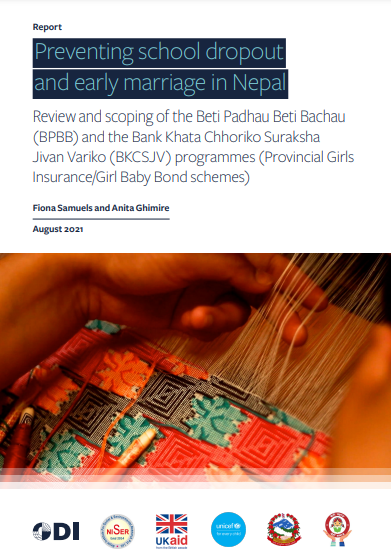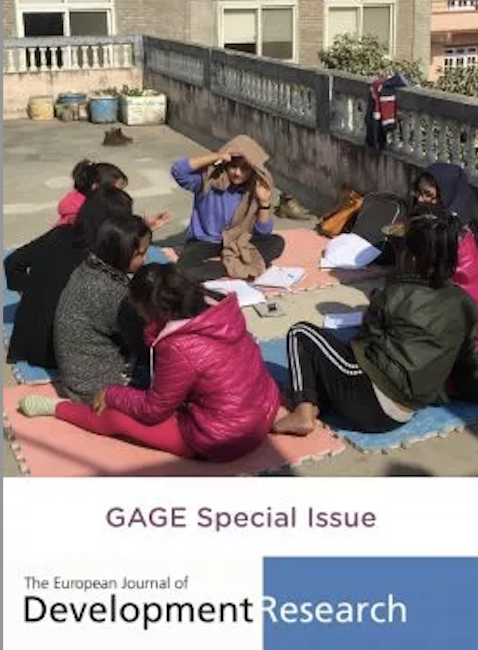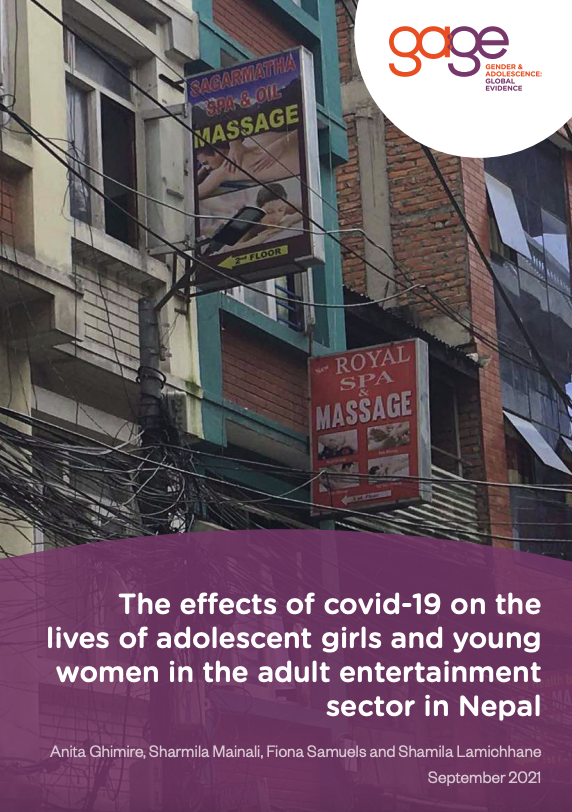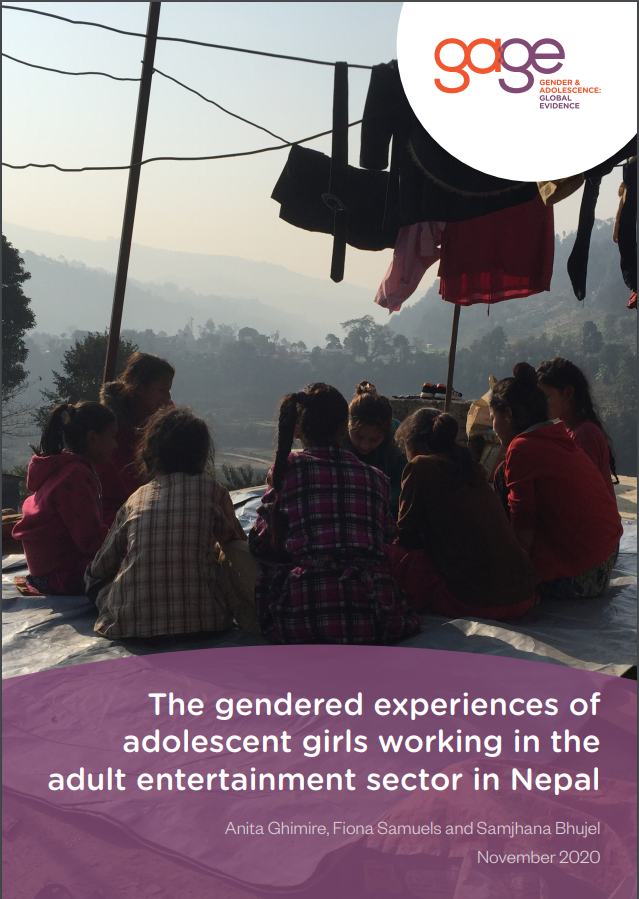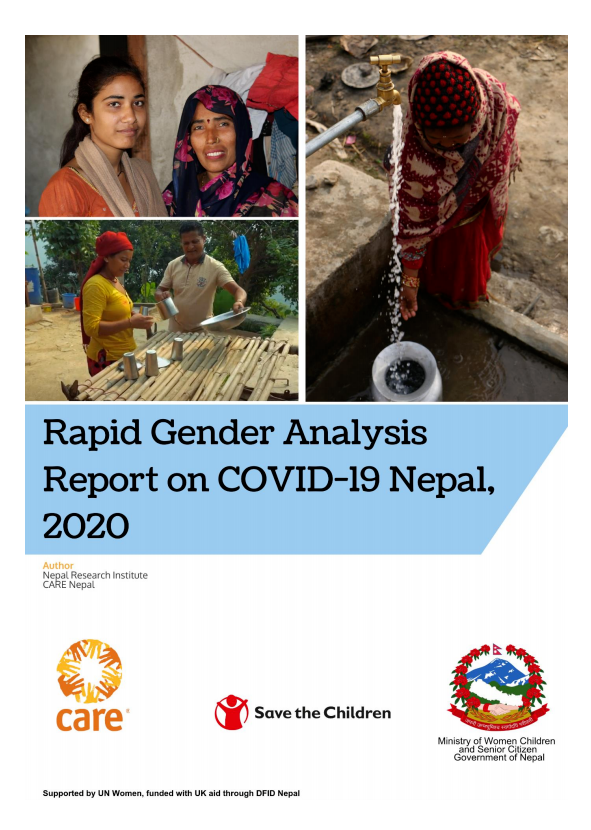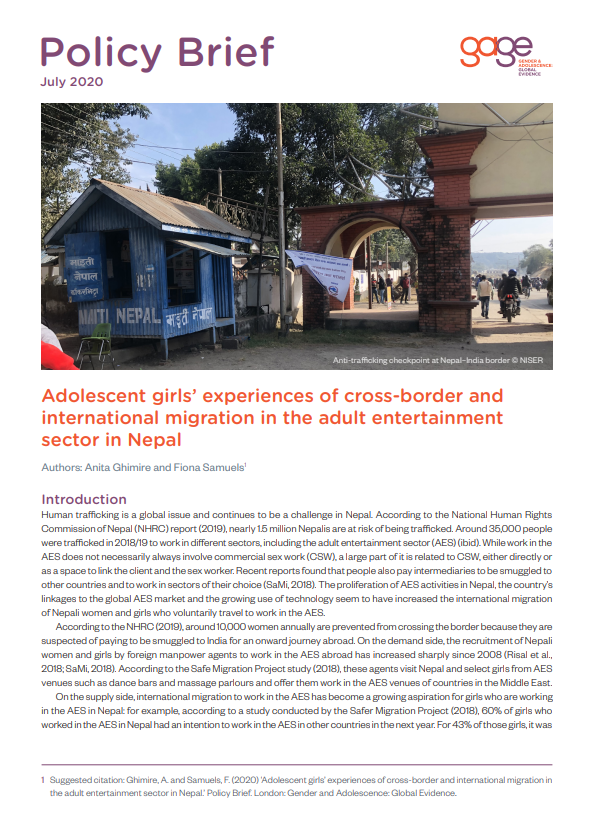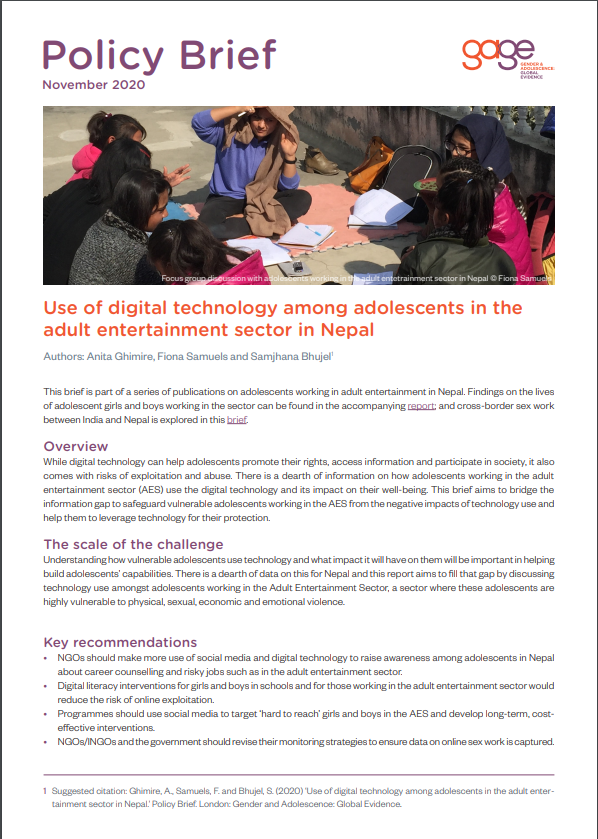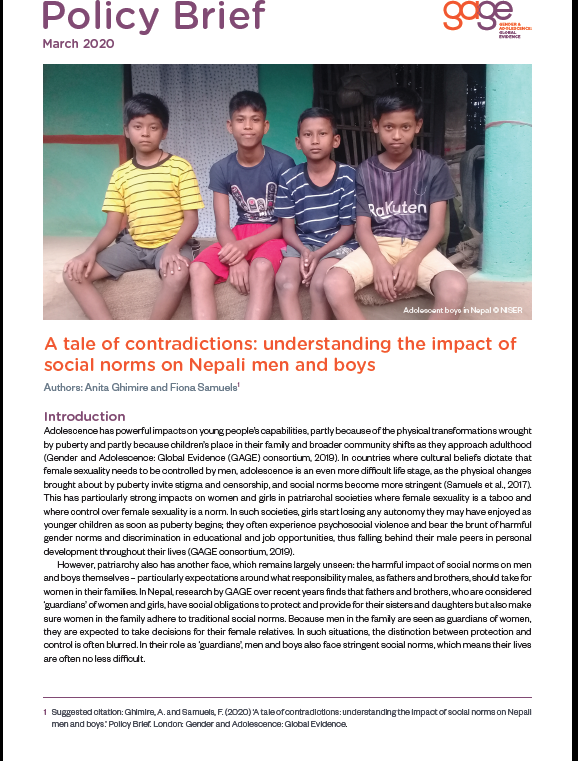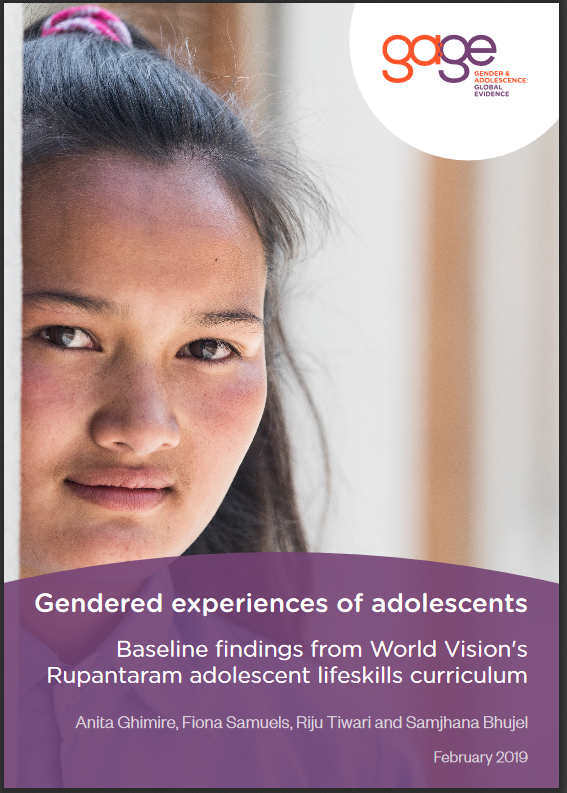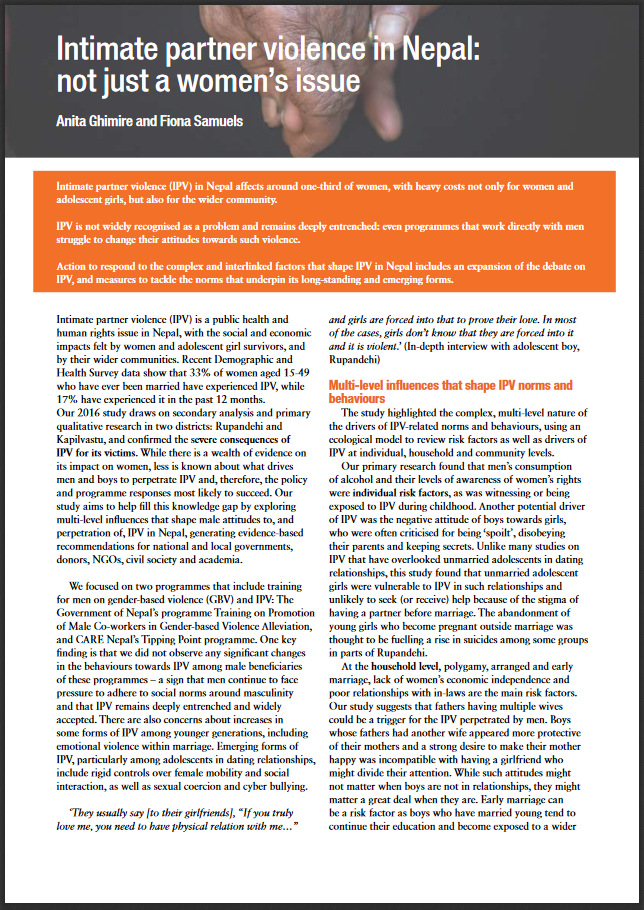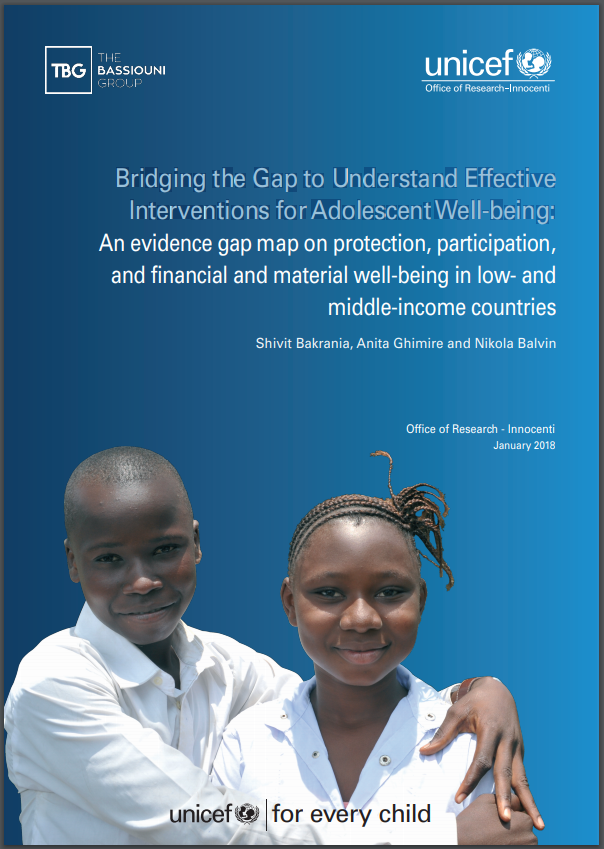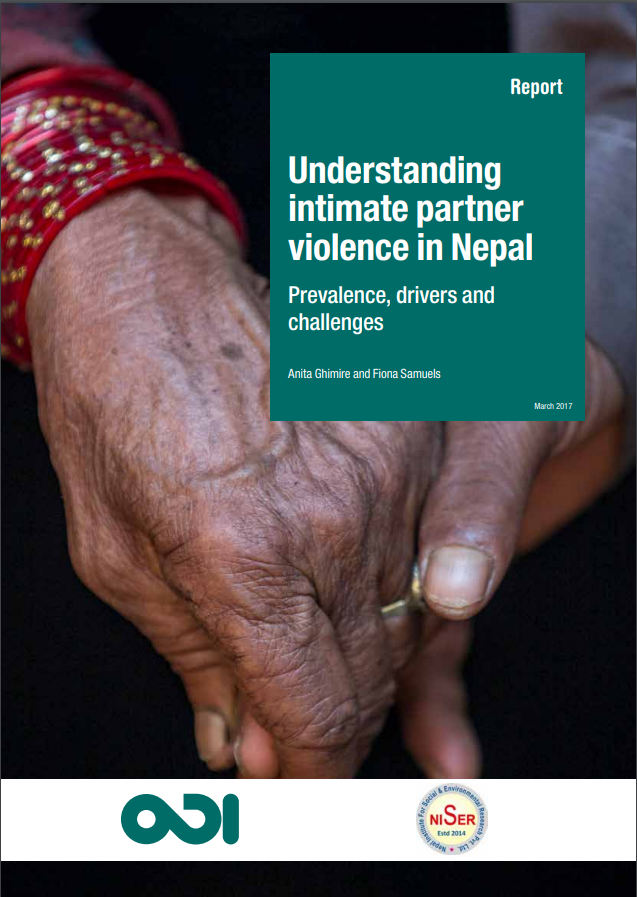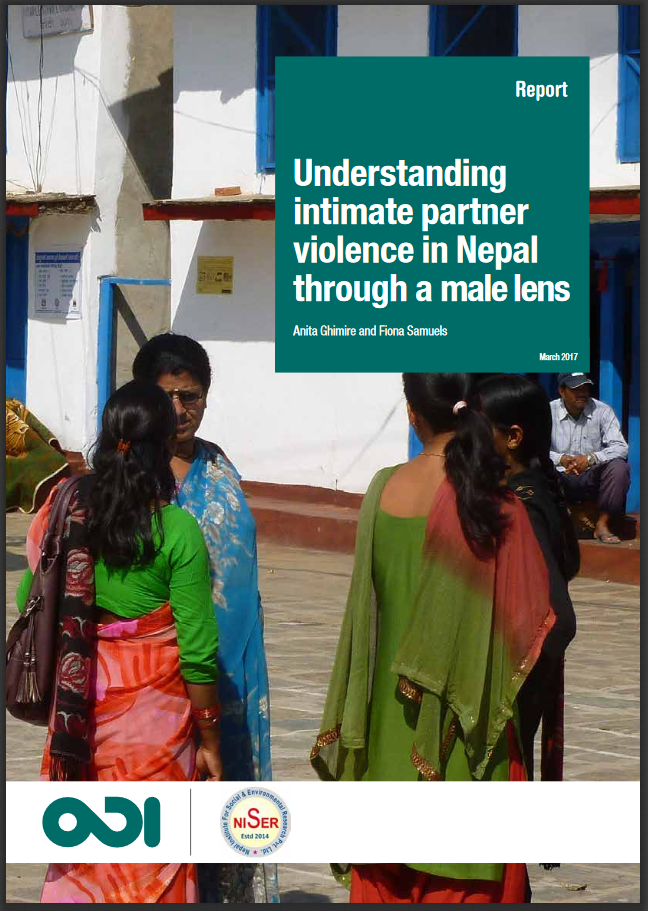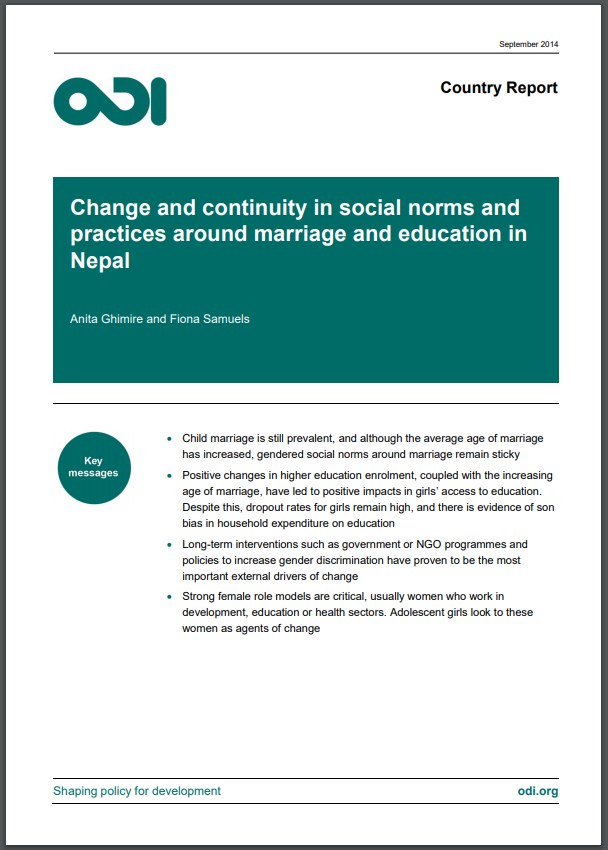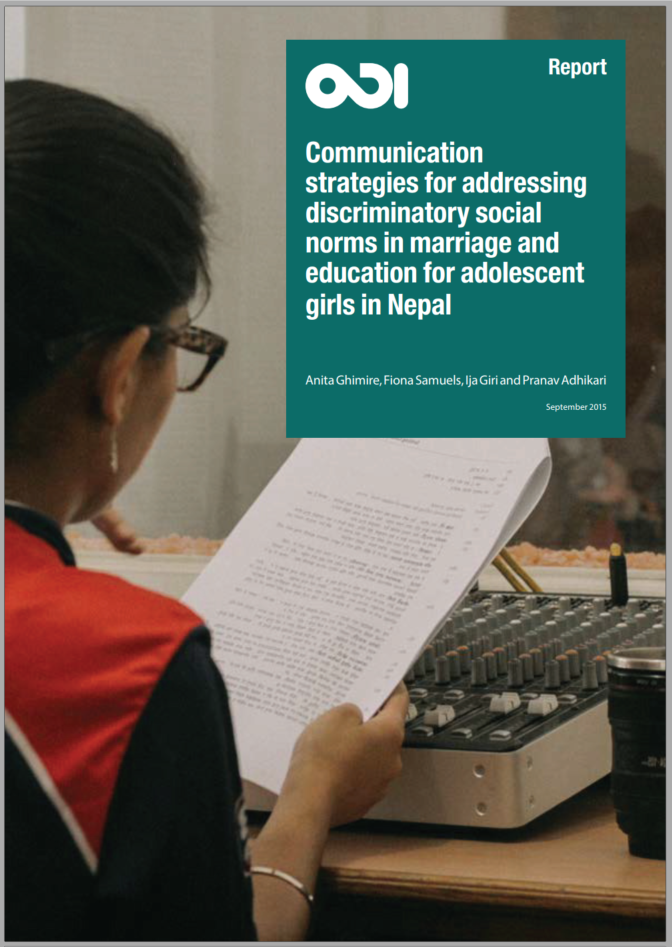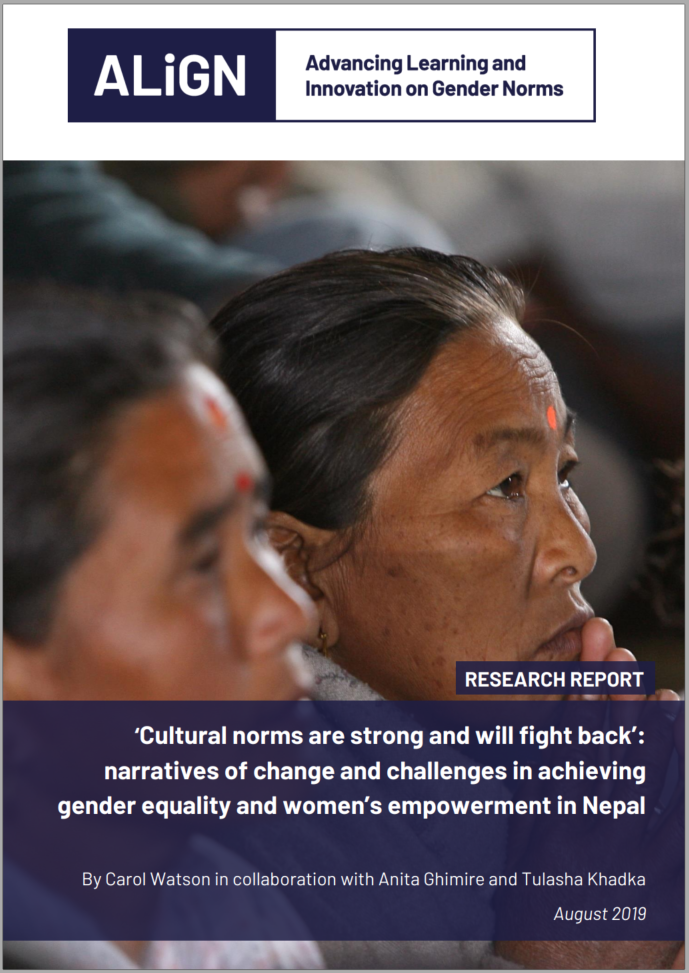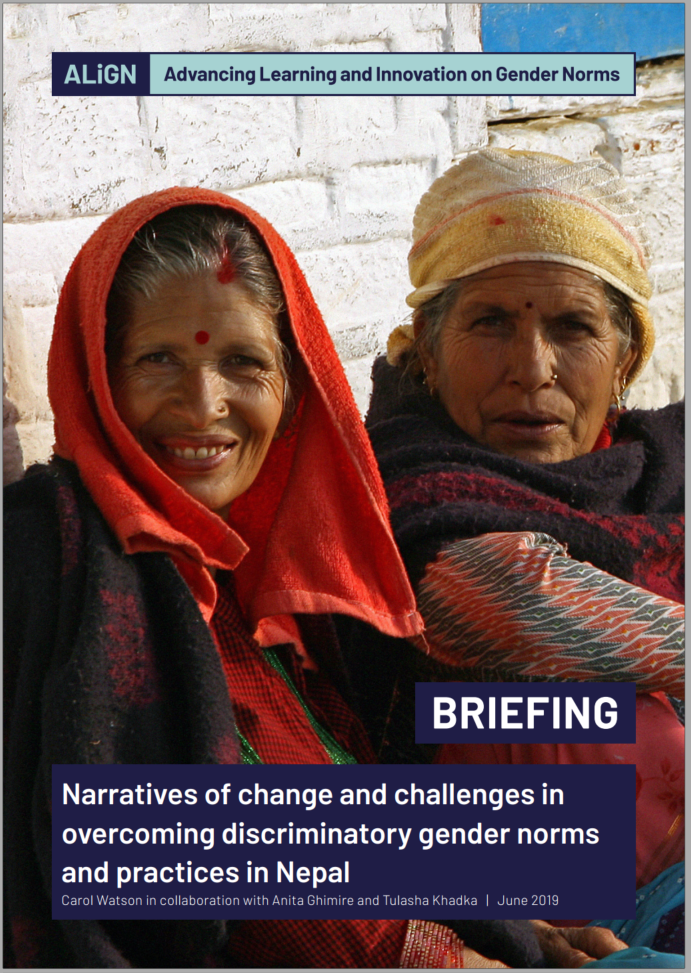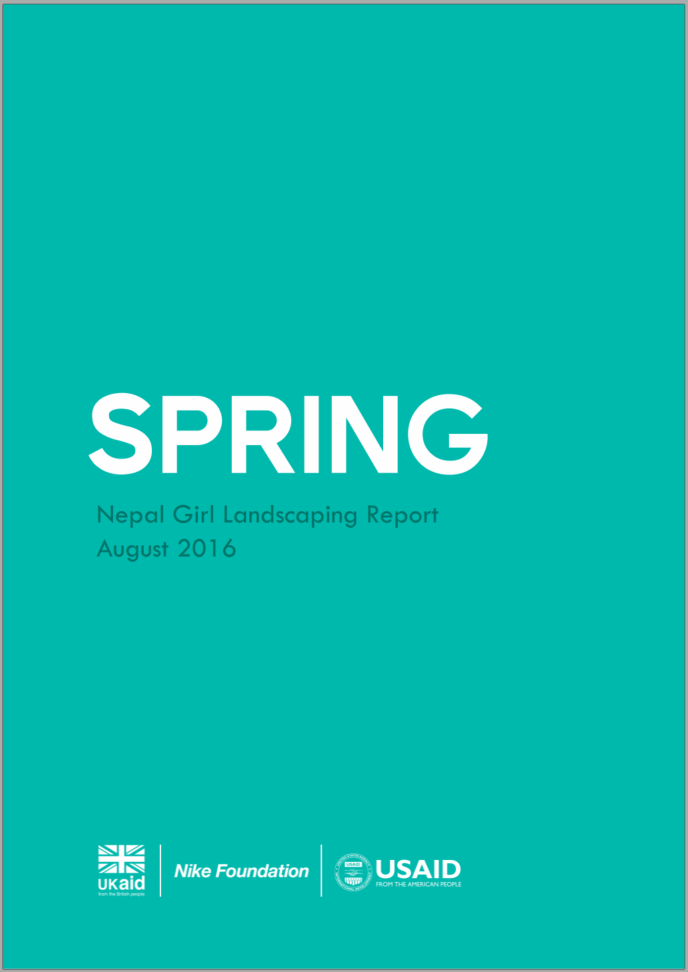Preventing school dropout and early marriage in Nepal
|
Discriminatory gender norms continue to impact the lives of girls and women in Nepal. This research assesses how to strengthen girl-focused social protection programmes in two of the country's provinces. This report highlights the objectives and key components of two girl-focused programmes in Nepal: Beti Padhau Beti Bachau (BPBB) and Bank Khata Chhoriko Suraksha Jivan Variko (BKCSJV), exploring their main successes and challenges. Both programmes aim to address gender discriminatory norms, namely early marriage, school dropout, sex-selective abortion, and gender-based violence in the home, community and school. The aim of this scoping report is to provide recommendations to programme implementers (UNICEF, the UK Foreign, Commonwealth and Development Office, and other social protection partners) as to how they can best support provincial governments to continue to implement these programmes.
|
Changing Patterns of Commercial Sex Work Amongst Adolescent Girls in Nepal: The Role of Technology
|
The introduction of technology, particularly mobile phones, in the mediation of commercial sex work (CSW) has meant that sex work is expanding from traditional venue based (such as through hotels and massage parlors) work to freelance sex work. It has also changed the face-to-face negotiation in commercial sex work to negotiations mediated online or by phone. Apart from a few programmes, interventions largely use establishments as entry points for their programming and are therefore excluding many girls and women who engage in CSW through personal contacts or facilitated by social media. This article is based on a two-year qualitative study in four districts of Nepal, in Delhi (India), and the Indo-Nepal border in eastern Nepal. It gives a short overview of the girls and their life in the adult entertainment sector (AES), which is the main entry point for CSW, and discusses how technology is increasingly used to mediate CSW.
|

